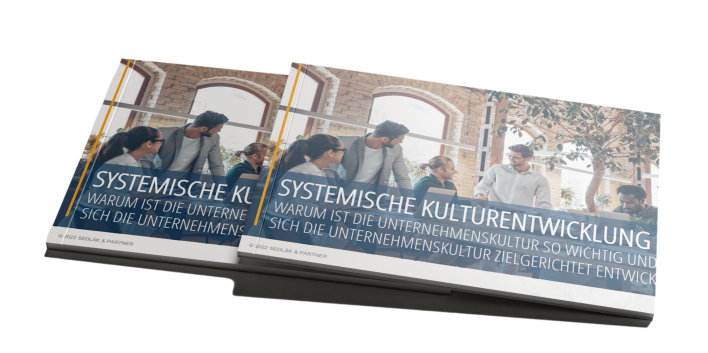Employer Attractiveness: What makes an employer attractive?
Employer attractiveness indicates the extent to which a company is perceived as being attractive to employees as a potential employer.
Put simply, employer attractiveness arises from strategically successful employer branding, which takes care of the company’s external image as an employer and simultaneously improves employer quality from within.
The factors that make an employer attractive are as diverse as we humans and our needs. Of course, some elements are generally considered to be beneficial for employer attractiveness nowadays. But rarely is the fulfillment of these factors sufficient to attract and retain the people you need to achieve your strategic goals.
The development of employer attractiveness starts with the question of which corporate culture promotes strategic positioning. Furthermore, what kind of people and competencies are needed to meet the various organizational challenges in line with the strategic future vision.
Table of contents
Importance of employer attractiveness when competing for talent
The advantages of a high employer appeal are obvious: The greater the perceived attractiveness, the easier it is for companies to attract qualified specialists and retain existing employees. This insight is not new. Employers position themselves accordingly in job advertisements and when competing for talent. The differentiation potential is dwindling more and more. The general factors of employer attractiveness are well known and are therefore considered, at least in the external presentation. Increasingly, we are noticing that there is a wide gap between external presentation and actual working conditions – in some cases, this is becoming a problem. |
Factors of employer attractiveness for recruiting and retaining skilled workers
EMPLOYEE RETENTION
- Fair remuneration
- Good promotion prospects
- Attractive offers for further development
- Meaningful leadership
- Corporate culture is perceived as fitting
- Good internal communication and transparency
- Stable health management
- Opportunities to be actively involved, also in decision-making processes
- Innovative ideas that get implemented
- Contemporary handling of technologies
- Possibilities for work-life blending (incl. mobile office)
- Autonomy and self-determination in the workplace
- Alignment with the company's values
- Satisfaction with company management
Corporate culture as a relevant lever for improved employer attractiveness
- Competitive compensation
- Advancement and career opportunities
- Development opportunities
- Authentic corporate values
- Corporate culture is attractive
- Employer's reputation as a strong, fair, and sustainable player
- Positive financial situation of the company
- Flexible working hours
- Attractive location
- Possibilities for work-life blending (incl. mobile office)
- Challenging work
- Acceptable workload
- Good company products and services
Corporate culture as a relevant lever for improved employer attractiveness
Corporate culture has a decisive influence on the overall coordination of behavior in an organization. This affects decisions, motivation, and cohesion in the workforce and its performance just as much as the success of innovations, strategic initiatives, or change processes. In this context, the following applies: There is no such thing as a good or bad culture.
What matters is the fit with the strategic goals. If this is no longer the case or if the culture is perceived as inhibiting, then cultural development makes sense.
A modern corporate culture that is in line with strategic goals not only promotes the achievement of these very goals but also improves the adaptability of the organization. It provides orientation and links implicitly existing basic assumptions and expectations with what is lived on a day-to-day basis.
Modern corporate culture has long ceased to be a nice-to-have factor. It is a relevant competition and success factor when it comes to smooth cooperation within the company in line with strategy as well as finding and retaining the right skilled employees.
Further information on effective culture development
CULTURE COMPASS
CORPORATE CULTURE
Branding
Structured employer branding to increase employer attractiveness
HOW CAN EMPLOYER ATTRACTIVENESS BE INCREASED? WHAT IS IMPORTANT IN EMPLOYER BRANDING? WHAT MAKES AN EMPLOYER APPEALING?
Numerous studies have addressed these questions in recent years. Soberingly, the first conclusion to be drawn is: It depends on who asks whom. We have compiled 20 studies on factors influencing employer attractiveness for you below. The studies determined what makes companies attractive to employees and applicants. They found consistent criteria and significant differences in perception regarding gender, age, and other demographic characteristics.
It, therefore, depends on whom an employer wants to be attractive to – and this brings us back to strategic positioning and the question of which competencies and people are needed to achieve the strategic goals.
Accordingly, we consider the following steps to be essential for the company-specific development of an employer branding that offers differentiation potential:
What does the company’s strategic vision of the future mean for human relations in the organization?
- What organization does the organization need to achieve the strategic goals?
- Which corporate culture and which leadership culture does the strategic positioning require?
- When is compensation perceived as fair?
What is the actual state?
- What is currently associated with the existing employer brand?
- What distinguishes us today? What do current employees value about us?
- Does the external image match the organizational reality?
- What corporate culture characterizes the organization today?
Which HR strategy can be derived from the corporate strategy?
- Which external image fits the strategic positioning?
- How do we create a fit between external presentation, organizational reality, and corporate values?
References and additional sources
- Indeed & Glassdoor’s Hiring and Workplace Trends Report (2023)
- Randstad Employer Brand Research (2022)
- Sopra Steria Managementkompass Survey Skilling (2022)
- Arbeitgeberattraktivität 2022 – Anforderungen der Talente an potenzielle Arbeitgeber (2022)
- Monster Insights – Der HR Report (2022)
- Trendstudie Arbeitgeberattraktivität (2021)
- Startklar – Schülerstudie von Ausbildung.de (2021)
- Strategien im Zeitalter des Fachkräftemangels (2020)
- Stepstone-Identifire-Studie Juni (2020)
- Randstad Employer Brand Research – Global Report (2020)
- Arbeitgeberattraktivität aus Sicht der Generation Z (2019)
- Der Randstad Award (2016)
- Arbeitgeberattraktivität im Kontext des Employer Branding (2016)
- Statista Arbeitgeberstudie (2015)
- Attraktive Arbeitgeber (2015)
- Messung der Arbeitgeberattraktivität – eine empirische Studie (2015)
- Most Wanted – die Arbeitgeberstudie (2014)
- Aufbau der Arbeitgeberattraktivität – Identifikation der Determinanten (2013)
- Generation Y: Das Selbstverständnis der Manager von morgen (2013)
- Talente sind wählerisch – Was Arbeitgeber attraktiv macht. (2013)
ARRANGE AN ONLINE DIALOG
 Frédéric SedlákSenior Consultant | HR Management
Frédéric SedlákSenior Consultant | HR ManagementWe are always at your service+49 4102 69 93 22
Ask for free informationf.sedlak@transformis-consulting.de
WHITE PAPER: SUCCESS FACTORS OF CULTURE DEVELOPMENT
Download free of charge – Why is corporate culture so important and how can it be developed in a targeted manner?






